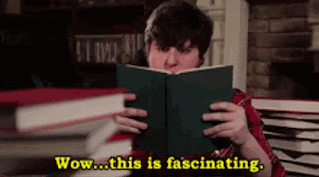Do you read reviews before reading or buying a book? I do. Book reviews help readers like me decide if a book is worth our time. Sometimes, a low rating would dissuade me. But I’ve learned that it’s mostly the reader’s personal preference and not the writing or the plot. That’s why knowing how to write engaging book reviews has become more essential than ever. So, let me share the six steps I follow when writing a good book review. Plus tips, because I’m generous like that. 😊
1.
Understand Your Target Audience
How to do a book review? The first step is knowing who’s going to read it.
Who are they?
- They could be ardent fans of a specific genre.
- Book club members or casual readers looking for their next read.
- New authors scouting for what ticks the audience.
Where do they read reviews?
- Social media platforms
- Book review sites
- Blogs
- Amazon
Tailor Your Review to Their Interests
Once you’ve identified your target readers, focus your
review on their interests.
- Mystery enthusiasts: emphasize elements like plot twists and suspense in your book review writing.
- Romance readers: discuss the authenticity of relationships and emotional depth.
A good book review matches its content to the audience’s
needs and preferences, making for a more relevant and engaging critique. And
always keep it genuine.
Honest book reactions are invaluable in helping potential readers decide if they want to spend time on a particular book.
2.
Read and Prepare
Successful book review writing begins long before the first
draft.
a. Thoroughly Read the Book
Experiencing the book as
a reader first allows you to form initial impressions and reactions. It’s crucial to read the trigger warning provided
by the author (usually in the blurb). This should prepare you for what to
expect so you don’t get upset or feel negatively about it, which would
subjectively affect your review.
b. Take Notes and Highlight Key Points
As you
read, jot down key themes, plot developments, character arcs, emotions you
felt, what was running through your head while reading that part, and standout quotes. These notes will serve as the backbone of your review. And help you write the review faster.
3.
Structure an Engaging Book Review
There are different ways to structure your feedback. This structure serves as a tool, not a rule, for you to excel in book writing reviews. Remember, there’s no one ‘right’ way to write an engaging book review—the key is to let your sincere and honest reactions guide your writing. Here’s a book review structure I follow:
- Hook
- Brief introduction
- Analysis
- Personal insights
- Conclusion
a. Hook the Reader
Start your book
review with an intriguing sentence, a captivating question, a surprising fact, or a relatable scenario
that piques the reader’s interest.
For instance, in my book review of Twisted Love by Ana Huang, I wrote:
You say stoic and cold, but he’ll burn the world for her; I say, “Shut up and take my money!”
That should get the attention of those who love this kind of MMC (male main character), and they’ll get a taste of how the story would go.
b. Briefly Introduce the Book
You can add the
blurb in the book, write your own summary, or introduce the book you’re
reviewing, including the title and the author. Provide a concise overview of
the plot without giving away too much. The goal is to entice your readers to
read more.
c. Analysis
This is where you
delve into the specifics and technicalities.
- Discuss Strengths and Weaknesses: Discuss what worked for you and what didn’t regarding plot, pacing, and character development. Most readers like fast-paced plots, slow burns, and plot twists.
- Explore Themes, Characters, and Writing Style: Discuss the themes it explores, the depth of its characters and the author’s writing style. Use evocative language to make your analysis engaging and informative.
d. Add Your Personal Insights
More than reading
the technicality of the book, I prefer to know what the reader thinks about
the story.
- How did you react?
- Did it move you, make you laugh, swoon, scream?
- Did you want to throw the book across the room? (Happens to me sometimes)
In my review of
Where It Began by Lucy Score, this is what I wrote:
Well, damn. I thought I was ready for this.
After all, I already know what happened in the first six books.
But there I was, book in hand. Broken and destroyed. Shattered, then beautifully rebuilt.
I laughed. I grieved. I was gutted. And then, like Phoebe, filled with hope and love.
Sh!t, is someone chopping onions again??
The more honest, the better.
This makes me gauge
whether a review is mostly just a personal preference. What didn’t work for them might work
for me, and vice versa.
e. Conclusion
Summarize your thoughts and give your final verdict—would
you recommend the book?
This is how I wrapped up my book review of Twisted Love:
Did it live up to the hype? It did for me.
Will I recommend this? Yes, if you like the tropes and don’t mind the author’s warning.
4.
Add Value to Your Review
A quality book review does more than just critique a book—it
offers additional value beyond the book itself. Here’s how you can do that:
- Recommend Similar Books or Authors: If the book reminds you of other works, mention them. This could be useful for readers who enjoy those similar books.
- Consider the Book’s Relevance to Current Events: If applicable, discuss how the book reflects or contributes to ongoing societal conversations. This can make your review more interesting and relatable to your readers. Or if it’s a Christmas-themed book, recommend it around the holidays.
- Discuss the Book’s Impact on You as a Reader: Open up about how the book affected you. Did it change your mind about something? Did it inspire you? Sharing your engagement with the text can make your review more compelling and relatable.
5.
Edit and Proofread
Writing a book review doesn’t stop once the last word is
written. Editing and proofreading are essential steps to shape your review for
publication.
- Check for Grammar, Spelling, and Punctuation: Polish your book review by ensuring it’s free from typographical errors. A clean, error-free review demonstrates attentiveness and professionalism, boosting your credibility as a reviewer.
- Ensure Clarity and Coherence: Each sentence should flow seamlessly into the next, and your ideas should clearly build upon each other.
- Get Feedback from Peers, if Possible: Another set of eyes can catch things you might have missed and provide valuable insights. If it’s feasible, have a friend or peer review your review.
6.
Select an appropriate rating
system
A rating system can
add an at-a-glance assessment to complement your honest reaction and detailed review. However,
choose one that aligns with your review style and your readers’ expectations.
- Star Ratings: The most common system, usually 1 to 5 stars. It’s intuitive, simple, and widely recognized by readers. Explain also what makes a book earn such a rating. This is what I use.
- Numerical Ratings: Similar to star ratings, but typically out of 10. This allows for more nuanced ratings as it provides more options.
- Letter Grades: This can be useful if your readers know the academic grading system. It ranges typically from an A+ to an F.
- Descriptors: Instead of numerical or symbolic ratings, you can use words (like “Exceptional,” “Great,” “Good,” “Fair,” and “Poor”) to describe the quality of the book.
Tips for Writing Engaging Reviews
Ready to start writing a book review that stands out? Here are some tips to help your thoughts shine:
- Use Vivid and Descriptive Language: To engage your readers, paint a clear picture with your words. For example, instead of saying, “The setting was nice,” you could write, “The setting was a quaint, sun-drenched village nestled in the rolling hills, evoking a sense of serenity.”
- Provide Specific Examples and Quotes: Including brief and relevant excerpts from the book to fortify your points and provide context for your thoughts. (See my Obsession Falls book review, for example).
- Be Honest and Balanced in Your Assessment: A balanced, honest book review won’t just lavish praise or dish out harsh criticism. It acknowledges both the strengths and weaknesses of the book, providing readers with an objective view. This is what I wrote for Things We Hide From The Light (Knockemout Book 2) by Lucy Score:
Is there something I didn’t like about it?
These Morgan brothers are carrying heavy baggage, and just like Knox, I didn’t like how Nash handled things with Lina. But then again, that’s just me. Lol. In the end, he made things right, so there’s redemption.
Knowing who Lina’s ex was was also awkward for me at first. But I got used to the idea since everyone’s already happy where they are.
- Avoid Spoilers or Use Spoiler Warnings: Nothing ruins a reading experience quite like an unexpected spoiler. If you must include one, make sure to warn your readers beforehand. It’s about respect and common courtesy. For example, I include my favorite scenes without spoiling the plot.
Favorite Scenes:
Shania Twain CD
Parking lot fight
Snowball fight
Sloane and Lucian’s mom
Every time Sloane and Lucian are at each other’s throat - Make Your Review Unique and Personal: Your perspective makes your review special. Don’t shy away from sharing your emotional reactions and personal insights.
- Keep Your Review Concise and Focused: While it’s easy to ramble on about a book, a great review is concise and meaningful. Be sure to focus on key points and keep your thoughts organized.
Share Your Review
After you’ve taken the time to truthfully and thoughtfully
craft your book review, it’s time to share your insights:
- Post on your blog or a review platform: Make your review accessible by posting it on your blog or a book review platform like Goodreads. This will help others make informed reading choices and build your reputation as a reliable reviewer.
- Promote on social media: Use social media to notify your network about your new review, drawing readers in with a compelling quote or a provocative question.
- Interact with comments and feedback: Respond to comments, thank readers for their feedback, and use the interaction to spark a conversation about the book.
Pinterest
Why are book reviews critical?
Book reviews connect readers, writers, and books in one interactive loop.
- For readers: a place to share their thoughts and help others consider.
- For authors: identify which part of their work needs improvement and receive affirmation from their fans.
How long should a book review be?
The ideal length for a book review depends on several
factors, including:
- Platform:
Different platforms have different expectations. Blogs, review websites, social media, and academic journals may have specific word count requirements.
- Genre:
Reviews for shorter genres like poetry or children’s books might be
naturally faster than those for longer, complex novels.
- Target audience: A shorter review might be ideal if your audience is casual readers interested in a quick overview. A more extended review could be preferable for more dedicated readers wanting deeper insights.
Here are some general guidelines:
- Short
reviews: 250-500 words
- Good
for platforms with limited space or for quick, concise overviews.
- Focus
on the book’s key points and offer a general recommendation.
- Medium-length
reviews: 500-750 words
- The most common length offers enough space for analysis and personal insights.
- Discuss
strengths and weaknesses, provide examples, and give a more nuanced
recommendation.
- Long
reviews: 750-1500 words
- Suitable
for in-depth analysis, comparisons with other works, and exploring the
book’s themes and literary elements.
- Best
for dedicated readers or academic settings.
Don’t
feel constrained by word count. Prioritize conveying your message effectively.
Takeaway: How To Write Engaging Book Reviews
A good book review is a gift to authors, a beacon for fellow readers, and a space to express your feelings and thoughts. Writing book reviews is simple, but how to write engaging book reviews can be a challenge. Remember, the most meaningful reviews come from a place of honesty and passion, so be genuine. Follow these engaging book review tips. And always, always be kind.





























10 comments
Hi, Lux!
ReplyDeleteI'm back for another three day stint on the blog circuit, dear friend, and happy to read your new post loaded with helpful hints for writing book reviews. I admit that I read reviews before buying a book or any other product with which I am unfamiliar. However, I tend to give little weight to extremely negative reviews, especially if they are outliers among mostly positive reviews. I have learned that some reviews are submitted by people who tear others down for sport or because they have a particular ax to grind. Typically, such reviews are poorly written and contain errors in grammar, spelling and punctuation.
I believe an on-target hook is the most important part of a good review. Yesterday, for instance, I emailed two non-blogging friends (baby boomers in their 70s) to alert them about the new post I published this morning. I teased my post by posing the question: "Do you remember where you were and what you were doing 60 years ago on January 18, 1964?" I'm sure it got them thinking and aroused their curiosity.
I enjoyed your article outlining the key principles behind effective book reviews. Enjoy the rest of your week and month, dear friend Lux, and happy new year to you!
This is why I don't write reviews.
ReplyDeleteThis is really a well written and informative overview of book reviewing. I think I try to incorporate most of these things when writing reviews for my blogs but I did pick up a few good new tips. Very comprehensive! (And thanks for coming by Marmelade Gypsy, Lux.)
ReplyDeleteI'll read a nonfiction book without first reading a review, but a novel, never. Too much of an investment in time and concentration. For one thing, you can't jump around or use an index to find the interesting parts like you can with a nonfiction book. Fiction can only be read from beginning to end, so it's best to know what you're getting into ahead of time by reading a review.
ReplyDeleteSuch great tips- always key to know your target audience. And proofreading is so key! Thanks for sharing this with us.
ReplyDelete-Ashley
Le Stylo Rouge
It's been years since I wrote any book reviews - your post is brilliant, but has reminded me how much work they are!
ReplyDeleteLisa | Lisa's Notebook
I don't usually read reviews before picking up a book. Personally, I enjoy watching a movie first and then discovering if there's a book version available to read afterward. I believe most people would typically do the opposite—read the book before watching the movie.
ReplyDeleteI am glad that you posted this because I am currently working on book reviews. Now I know exactly what to do. Thanks for writing this very detailed post.
ReplyDeleteHi Lux, This is an excellent post. Great info and suggestions. I am working on a blog post to review a book about a person’s search to find the original lost art of the American National Parks. I will be taking your suggestions to heart. I appreciate you! Thanks, as always, for sharing! John
ReplyDeleteExcellent tips.
ReplyDelete